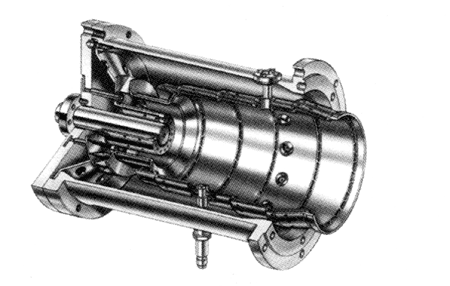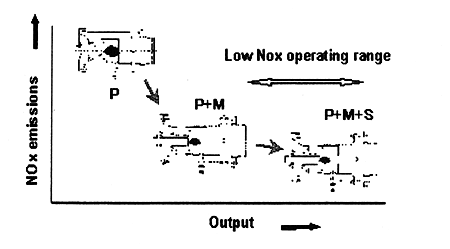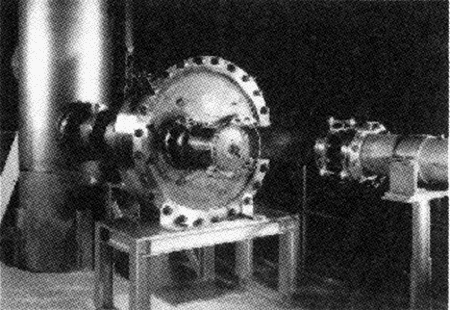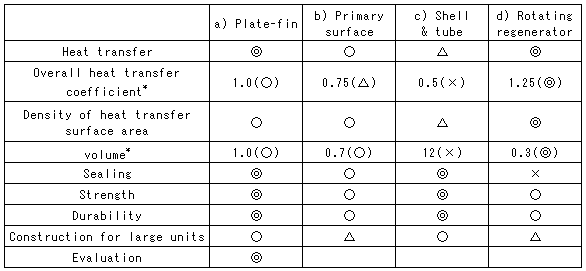The results of these independent research topics have been incorporated into the combustor to improve its performance. Combustor performance evaluation for the single-can combustor (Figure 6) is ongoing and overall performance is being improved.
Research has revealed that the target low-NOx combustion over a wide load range (wide air/fuel ratio range) be achieved.

Figure 4 Conceptual drawing of combustor

Figure 5 Control of burners

Figure 6 Combustor test rig
5.2) Research on Recuperator
The recuperator is the key to improving thermal efficiency, and high thermal efficiency, along with compactness, are required for marine applications.
Table 3 shows a comparative analysis of various types of recuperators. The shell-and-tube type requires a lot of space. The rotary accumulator has a sealing problem, which limits its use to high pressure ratios. While the primary surface type is slightly more compact, when strength, durability and ease of large-scale manufacture are considered, the plate-fin type is superior, and thus is used in the SMGT.
Table 3 Comparison of recuperator type

Note; ratio to the value of the plate-fin type

Figure 7 shows a diagram of the core of the plate-fin recuperator now being developed. The core uses many layers of small fins a few millimeters high mounted both in the exhaust gas passage and in the air passage to transfer exhaust heat to the air. All together, more than 100 layers are used.
As Figure 7 shows, exhaust gas flows upwards and the intake air flows downwards. At the center of each layer (called the counter-flow area) the exhaust gas opposes the intake air flow, and this is where most of the heat exchanging takes place. Both the exhaust side and air side fins in the counter-flow area are slightly offset from the direction of flow in order to promote heat transfer.
During development, heat exchanging performance and thermal stress were theoretically analyzed and tested. A 10-layer partial layered model (each layer of actual size) was produced for performance evaluation of the recuperator. In producing and assembling this partial model of the recuperator core, production technologies, durability and production feasibility are also being tested.
Exhaust gas drift occurring at the recuperator inlet reduces thermal efficiency.
BACK CONTENTS NEXT